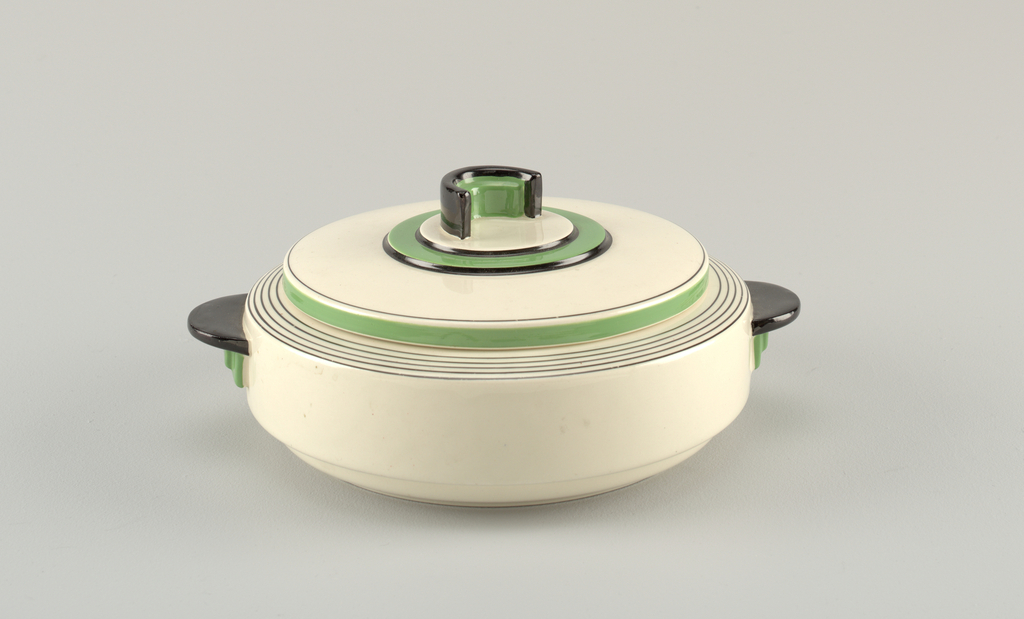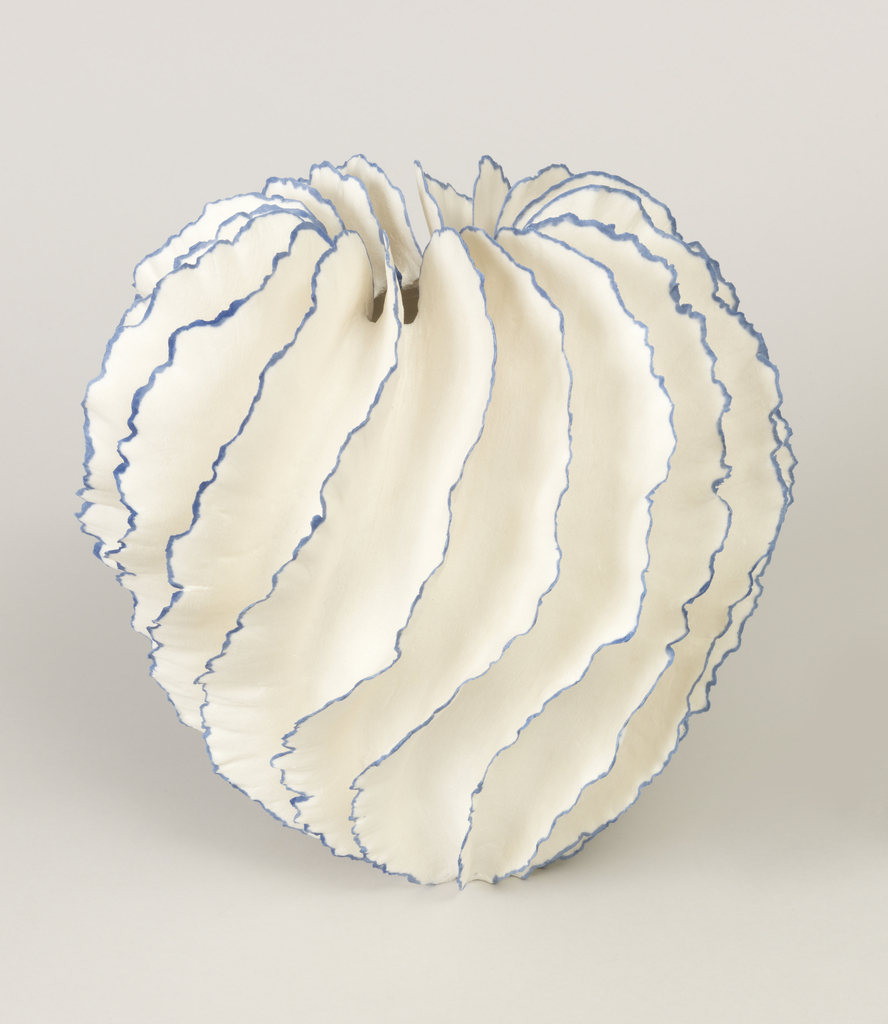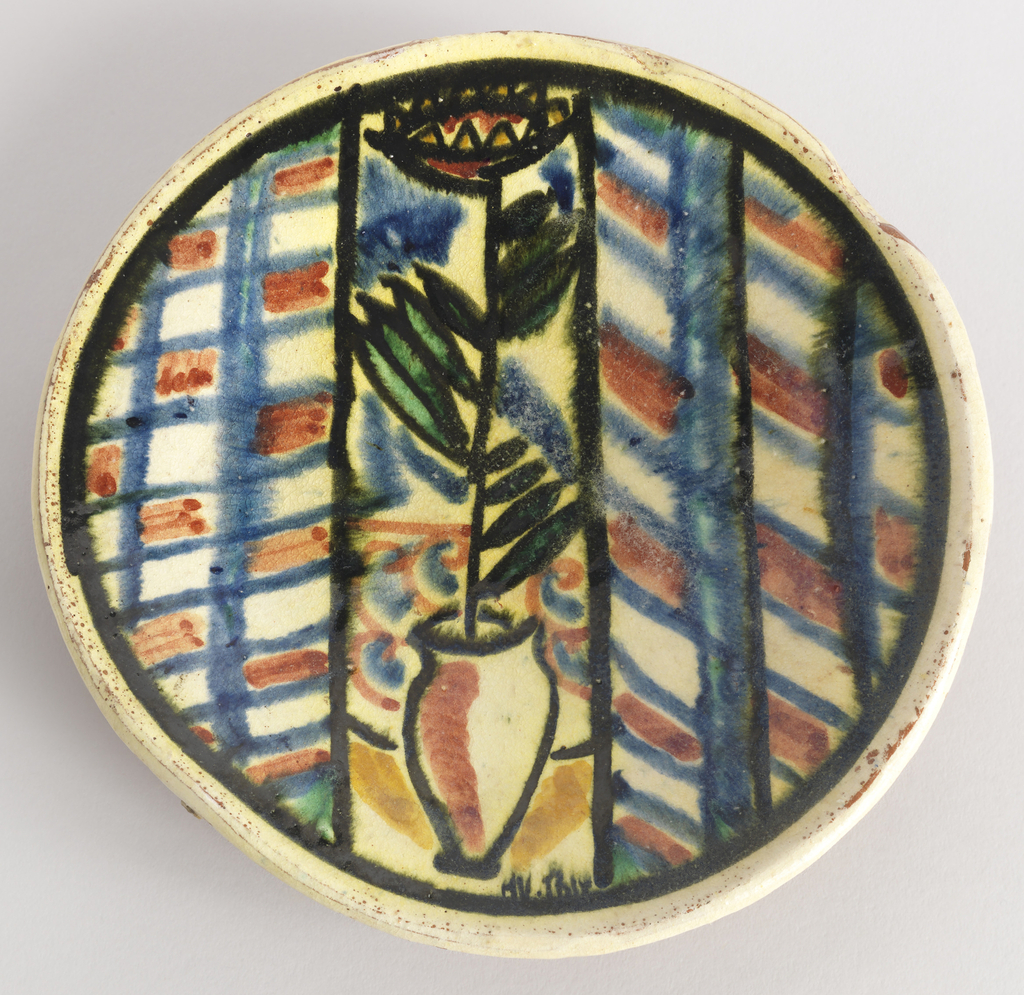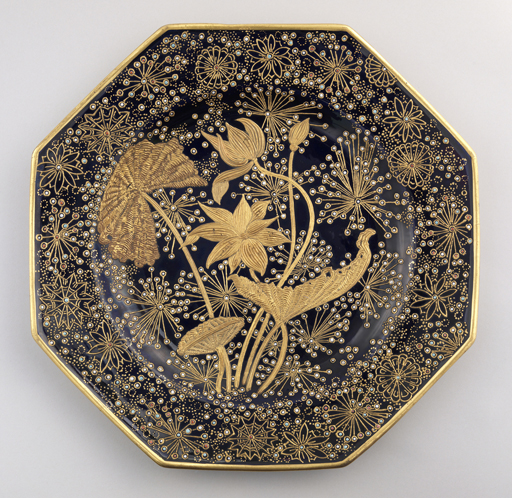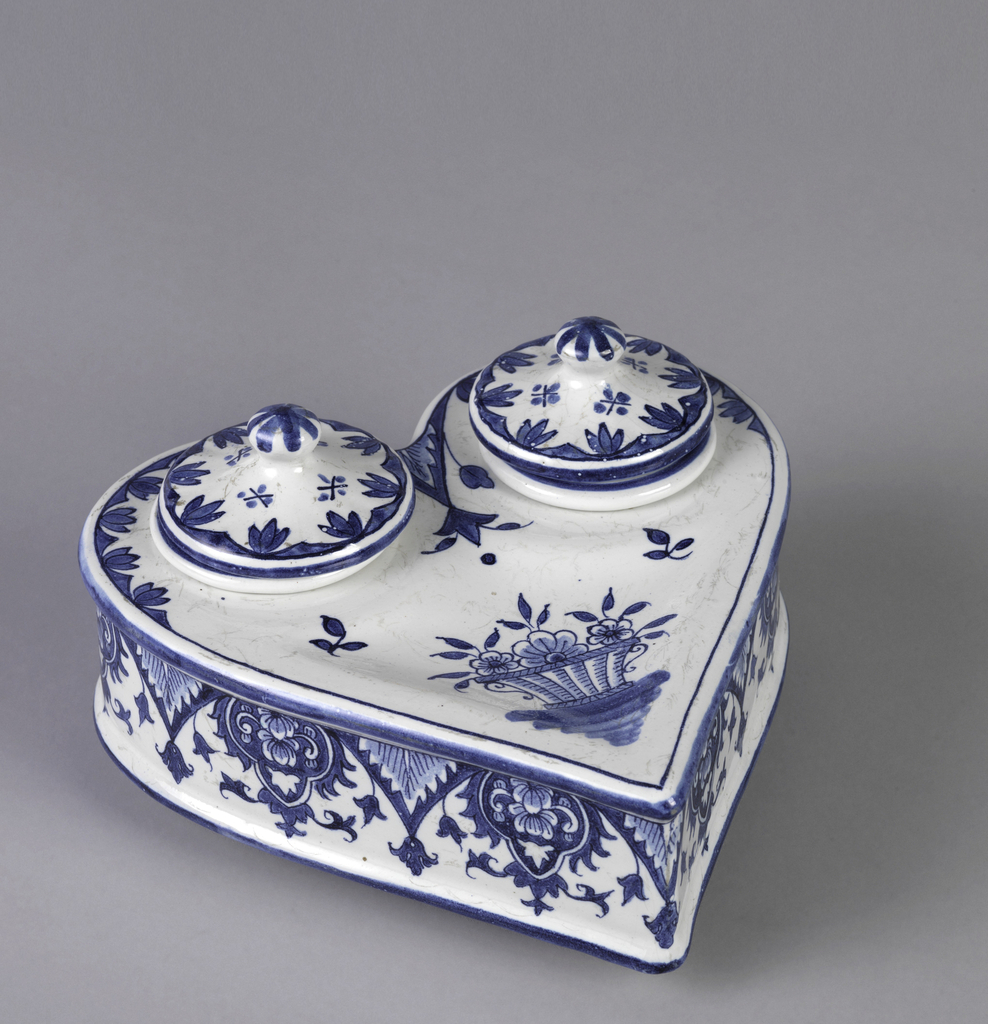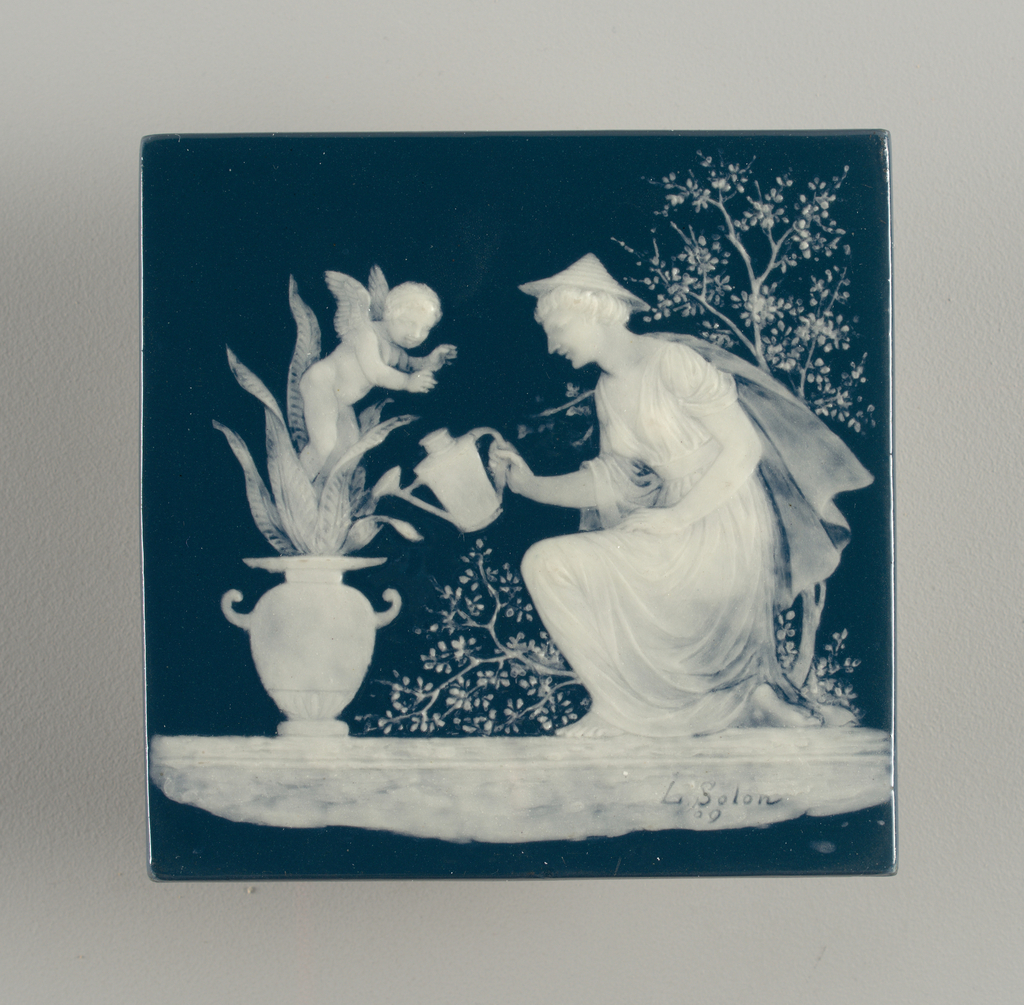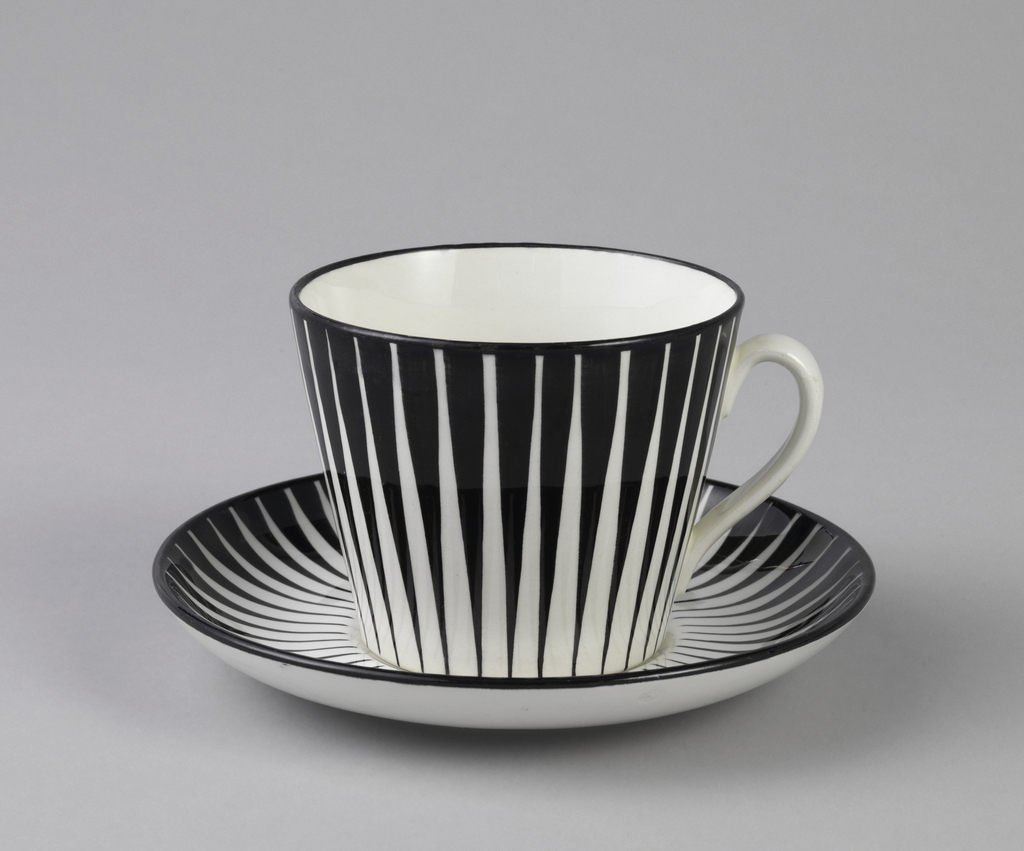The September 1934 issue of The Pottery Gazette and Glass Trade Review features a full-page color advertisement devoted to “Casino” by Royal Doulton. This modern shape debuted a few years earlier and came in three patterns: “Marquis,” “Radiance,” and “Envoy.” Pictured in the advertisement is the earthenware tureen seen here in the museum’s collection. Decorated...
Gertrud and Otto Natzler were leading figures of West Coast ceramic production in the mid-twentieth century. This bowl, as well as two other Natzler pieces, were donated by the granddaughter of the original owner, Friederich Rotter, who met the Natzlers in the 1930s through his Vienna-based home furnishings business and gallery, Der Wohnraum that sold...
This delicately hand-sculpted vase might look as though it washed onto the beach, together with a treasure trove of seashells and corals; yet, it emerged from the studio of Sandra Davolio, a designer and ceramicist who lives and works in Denmark. The vase is made of frit porcelain, which is usually composed of crushed quartz,...
Upon his return from military service in Europe in 1919, Henry Varnum Poor settled in an artists’ community in New City, New York where he purchased land and began single-handedly building a home called Crow House, named after the local birds who kept him company while he worked. As a struggling painter Poor was always...
In the last quarter of the nineteenth century the Greenpoint neighborhood of Brooklyn was a hub for ceramic production and home to at least a dozen major firms. The beaches of the East River offered plentiful white sand and underdeveloped land near the shore accommodated the building of large factories. These firms produced a broad...
This delicate blue and white faience inkstand transports us back to a time in which letter writing was an integral part of daily communications. The inkstand was made in Rouen, an early center of production for French ceramics known as faience, which is tin-glazed earthenware. Between 1644 and the end of the eighteenth century, it is...
This pâte-sur-pâte glazed porcelain plaque, made by Mintons Ltd. in about 1909, reflects the humor and creativity of its designer, Marc Louis Emanuel Solon (1835-1913). Pâte-sur-pâte is a complex, time-consuming technique, which requires the designer to apply successive thin layers of liquid clay onto a tinted clay body in order to create a design. The...
In calculated contrast, sharp black wedges streak mathematically across a white ground. The black and white stripes that line Eugen Trost’s Zebra cup and saucer accentuate its tapered, circular form just as cleanly as they denote the wild zebra, from which it takes its name. These stripes, however, are hand painted. The Gefle Porcelinsfabrik in...
Maker Michael Eden talks about the thinking and process behind his “Tall Green Bloom” urn, created with CAD software and 3D printing techniques. This urn will be on view at Cooper Hewitt as part of “Making Design,” our new exhibition of works from the permanent collection. Opening 12/12/14.
